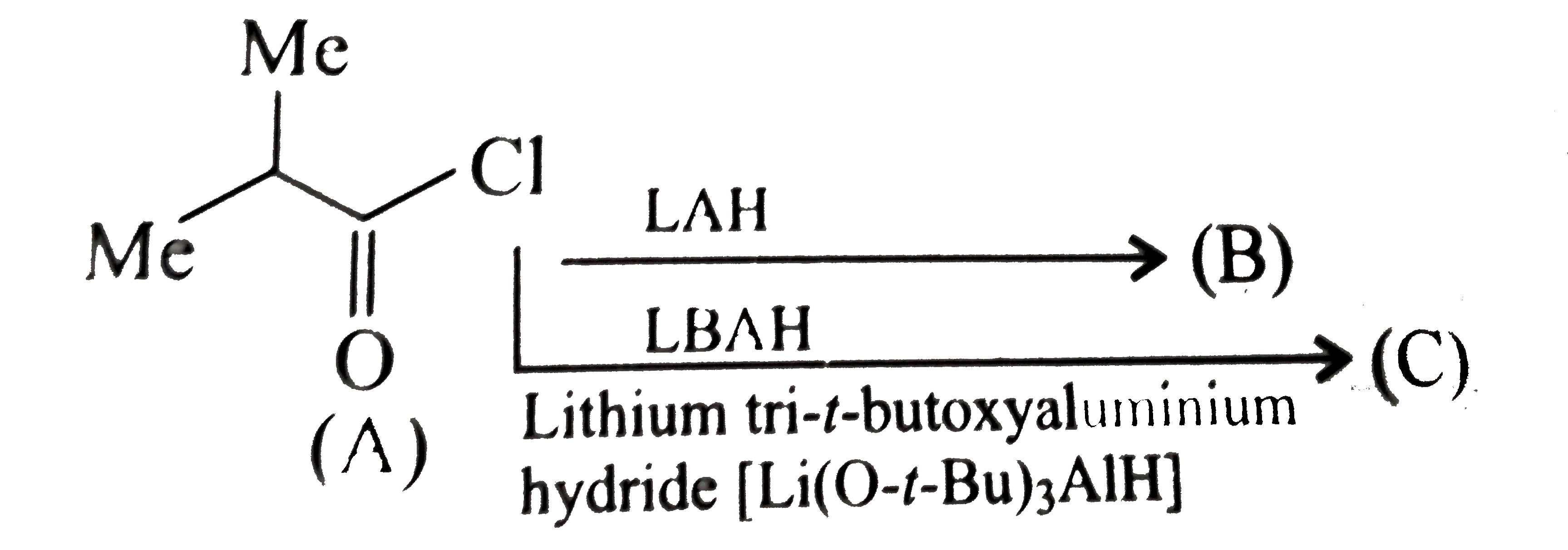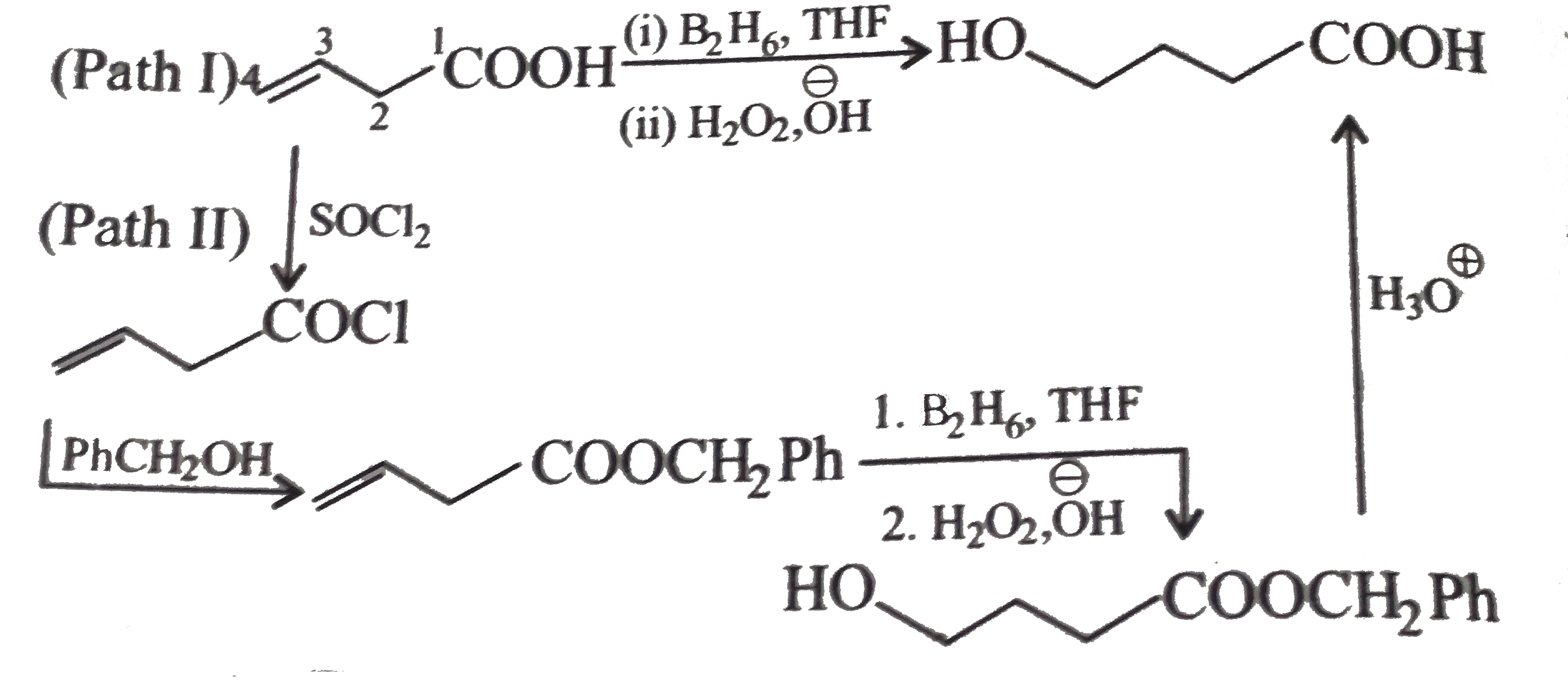Which of the following statements are correct about the reaction between the copper metal and dilute HNO3?
The principle reducing product is NO gas
Cu metal is oxidised to Cu2+(aq.) ion which is blue in colour
NO is paramagnetic and has one unpaired electron in antibonding molecular orbital
NO reacts with O2 to produce NO2 which is linear in shape
The correct Answer is:A, C
To solve the question regarding the reaction between copper metal and dilute HNO₃, we will analyze each statement provided and determine their correctness based on the chemical principles involved.
1. Understanding the Reaction:
- When copper (Cu) reacts with dilute nitric acid (HNO₃), the products formed are copper(II) nitrate (Cu(NO₃)₂), water (H₂O), and nitrogen oxide (NO). The reaction can be represented as:
Cu+2HNO3→Cu(NO3)2+H2O+NO
2. Analyzing Statement 1:
- "The principal reducing product is NO gas."
- In this reaction, the nitrogen in HNO₃ is reduced from an oxidation state of +5 to +2 (in NO). Therefore, the principal reducing product is indeed NO.
- Conclusion: This statement is correct.
3. Analyzing Statement 2:
- "Copper metal is oxidized to Cu²⁺ aqueous ion which is blue in color."
- Copper metal (Cu) is oxidized to Cu²⁺. However, while Cu²⁺ ions are blue in color, the statement is misleading because it does not specify that the blue color is due to the presence of Cu²⁺ in solution. The statement is technically correct in terms of oxidation but misleading regarding the color.
- Conclusion: This statement is incorrect.
4. Analyzing Statement 3:
- "NO is paramagnetic and has one unpaired electron in anti-bonding molecular orbital."
- According to molecular orbital theory, NO has an unpaired electron, making it paramagnetic. The unpaired electron is indeed in an anti-bonding molecular orbital.
- Conclusion: This statement is correct.
5. Analyzing Statement 4:
- "NO reacts with O₂ to produce NO₂ which is linear in shape."
- NO does react with O₂ to produce NO₂, but NO₂ has a bent or V shape due to the presence of a lone pair on the nitrogen atom, making it not linear.
- Conclusion: This statement is incorrect.
Final Answer:
The correct statements about the reaction between copper metal and dilute HNO₃ are:
- Statement 1: The principal reducing product is NO gas. (Correct)
- Statement 3: NO is paramagnetic and has one unpaired electron in anti-bonding molecular orbital. (Correct)
- When copper (Cu) reacts with dilute nitric acid (HNO₃), the products formed are copper(II) nitrate (Cu(NO₃)₂), water (H₂O), and nitrogen oxide (NO). The reaction can be represented as:
Cu+2HNO3→Cu(NO3)2+H2O+NO
- "The principal reducing product is NO gas."
- In this reaction, the nitrogen in HNO₃ is reduced from an oxidation state of +5 to +2 (in NO). Therefore, the principal reducing product is indeed NO.
- Conclusion: This statement is correct.
- "Copper metal is oxidized to Cu²⁺ aqueous ion which is blue in color."
- Copper metal (Cu) is oxidized to Cu²⁺. However, while Cu²⁺ ions are blue in color, the statement is misleading because it does not specify that the blue color is due to the presence of Cu²⁺ in solution. The statement is technically correct in terms of oxidation but misleading regarding the color.
- Conclusion: This statement is incorrect.
- "NO is paramagnetic and has one unpaired electron in anti-bonding molecular orbital."
- According to molecular orbital theory, NO has an unpaired electron, making it paramagnetic. The unpaired electron is indeed in an anti-bonding molecular orbital.
- Conclusion: This statement is correct.
- "NO reacts with O₂ to produce NO₂ which is linear in shape."
- NO does react with O₂ to produce NO₂, but NO₂ has a bent or V shape due to the presence of a lone pair on the nitrogen atom, making it not linear.
- Conclusion: This statement is incorrect.
The correct statements about the reaction between copper metal and dilute HNO₃ are:
- Statement 1: The principal reducing product is NO gas. (Correct)
- Statement 3: NO is paramagnetic and has one unpaired electron in anti-bonding molecular orbital. (Correct)
Topper's Solved these Questions
- p-BLOCK ELEMENTSBOOK - VK JAISWAL ENGLISHCHAPTER - p-BLOCK ELEMENTSEXERCISE - LEVEL 3 (PASSAGE TYPE)
17 Videos
- p-BLOCK ELEMENTSBOOK - VK JAISWAL ENGLISHCHAPTER - p-BLOCK ELEMENTSEXERCISE - ONE OR MORE ANSWERS IS/ARE CORRECT
95 Videos
- p-BLOCK ELEMENTSBOOK - VK JAISWAL ENGLISHCHAPTER - p-BLOCK ELEMENTSEXERCISE - SUBJECTIVE PROBLEMS
35 Videos
- METALLURGYBOOK - VK JAISWAL ENGLISHCHAPTER - METALLURGYEXERCISE - ASSERTION-REASON TYPE QUESTIONS
29 Videos
- PERIODIC PROPERTIESBOOK - VK JAISWAL ENGLISHCHAPTER - PERIODIC PROPERTIESEXERCISE - MATCH THE COLUMN
11 Videos
Similar Questions
Which of the following staements are correct about ElcB reaction ?
View Solution
Which of the following statements are correct about the above reaction ?
View SolutionWhich of the following statements are correct about the reaction given below ?

View SolutionWhich of the following statements is correct about receptors?
View SolutionWhich of the following statements are correct about the following reaction ?

View SolutionWhich of the following statements are correct about the following reaction

View Solution
Which of the folloiwng statements is correct about the above reaction?
View SolutionWhich of the following statements are true about metals ?
View SolutionWhich of the following statements are correct about barbiturates ?
View SolutionWhich of the following statements are correct about the following reactions :
 .
.
View Solution
